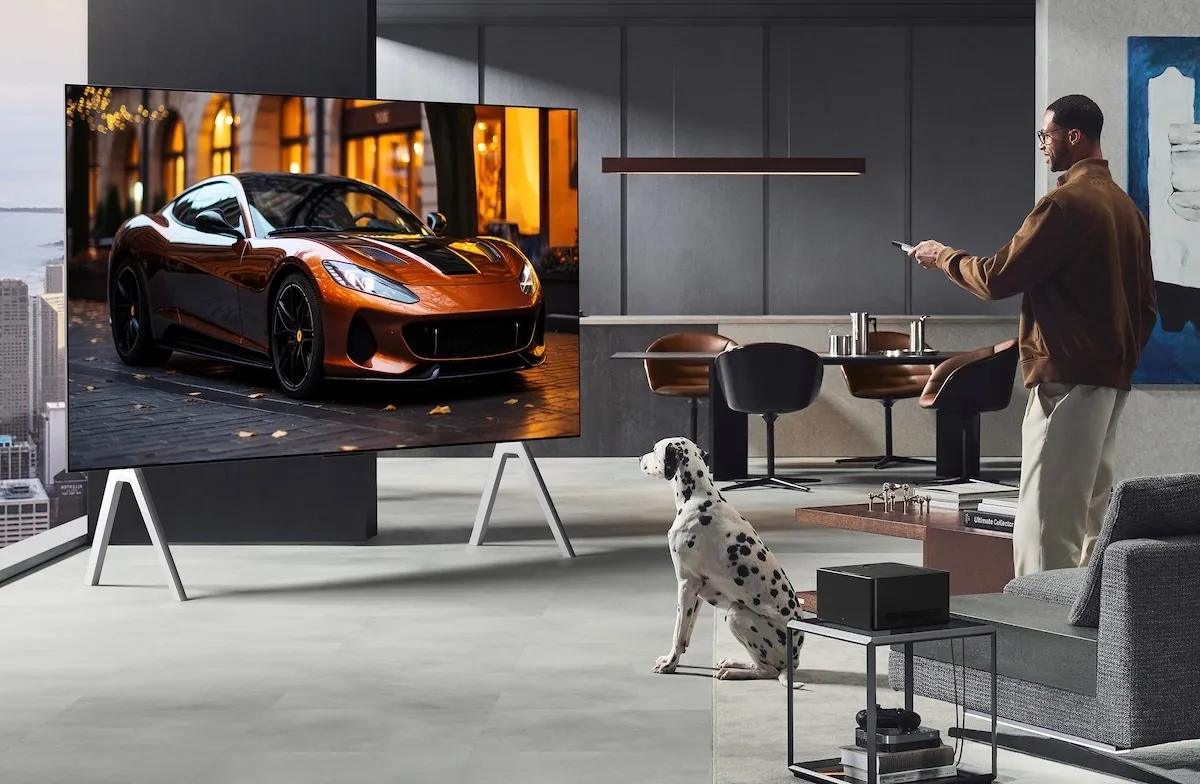LG OLED evo G5 (2025) vs evo G4 (2024): what’s different?

LG’s OLED evo G5 is here, and it’s bringing some big changes over last year’s G4. But are these upgrades enough to justify an upgrade? Here’s what’s changed in LG’s 2025 OLED evo lineup.
Luke Hopewell is a gadget veteran of over 10 years. He’s reviewed over 100 TVs in his time, and been to the magic factory where they’re all made.
Got a question for the author? Email me: luke@redaktor.co.
Quick look: what’s new between 2024 and 2025 LG OLED TVs?
Check out my breakdown of what’s new and what it all means.
| Feature | Jargon buster: what does it do? | 2024 OLED Models | 2025 OLED Models |
| Panel tech | How the panel has been constructed to display images. | Micro Lens Array | Four-Stack panel for better brightness, blacks and colour |
| Processor | Drives all the gear and works on things like AI picture and sound enhancements. | α9 AI Processor Gen6 | New α11 AI Processor Gen2 (AI-driven upscaling & tone mapping improvements) |
| AI Sound | Sound processing that adapts to what’s on screen for a better experience. | AI-enhanced 9.1.2 virtual surround | Upgraded 11.1.2 AI Sound Pro |
| Brightness Booster | Makes the picture more viewable in well-lit rooms. | Brightness Booster Max | Brightness Booster Ultimate (3x brighter than standard OLED) |
| Filmmaker Mode | Switches the screen into a picture mode that displays content the way the filmmaker “intended”. | Standard Filmmaker Mode | Filmmaker Mode® with Ambient Light Compensation |
| Gaming Features | Tech like inputs and special frame rates that boosts the appearance of games. | 4K 120Hz VRR, G-SYNC, FreeSync Premium | 4K 165Hz VRR, G-SYNC, FreeSync Premium, ClearMR 10000 certification |
| True Wireless OLED TV | The input box is separated from the panel allowing you to beam your content across a room and reduce cable mess. | First introduced with 2024 M3 Series | Expanded to M5 Series (First true wireless OLED TV at 144Hz) |
| webOS Updates | Updates to the TV’s smart hub software over time. | Standard webOS updates | Guaranteed 5-year OS updates via webOS Re:New Program |
| Generative Image Gallery | Not available | Create custom backgrounds with voice commands | |
| AI Search + Chatbot | Standard voice commands | LLM-powered AI Search (Microsoft Copilot integration) |
In-depth: what’s different?
It’s brighter. A lot brighter.
What is the different between OLED and OLED evo? Primarily, it’s all about producing a brighter picture. and LG is really going for it this year.
You see, OLED TVs aren’t as strong in well-lit environments as their backlit LED competitors. That’s why LG is focussing on OLED evo and on panels that produce as much light as possible.
Last year’s Micro-Lens Array tech on the OLED evo G4 was nuts. It did something to your eyes that just sucked you into the image while giving a significant brightness bump. It enhanced screen brightness by focusing emitted light, making images more vivid and immersive. LG has opted for a different approach in 2025, though.
The 2025 OLED evo G5 ditches the MLA lenses in favour of an all-new Four-Stack panel design. Instead of tiny lenses focusing light, LG now layers the OLED panel into four separate stacks. There are two blue layers, one red layer and a green layer.
This multi-layered, sandwich-style approach allows the TV to produce significantly more light without relying on the optical lens system. Plus, it’s easier to produce, meaning it’s probably set to get cheaper more-quickly in stores throughout 2025. LG claims the Four-Stack panel allows the G5 evo OLED to produce three times the brightness of a conventional OLED and a 40% brightness boost over last year’s G4 model.
LG is also cranking up the LG Brightness Booster Ultimate technology. It improves how the panel manages light overall to ensure deeper blacks and even more detail in bright scenes.
The G5 also ups its refresh rate to 165Hz – from 144Hz on the G4 – offering a smoother gaming experience. It’s worth pointing out, however, this upgrade excludes the 48-inch and 97-inch models.
Another new lighting feature is Filmmaker Mode which now has ambient light compensation. This enhances cinematic accuracy by automatically adjusting picture settings based on the lighting conditions of your room, preserving the filmmaker’s original vision in both bright and dark environments.
It’s smarter and has lots of AI
AI is everywhere. Even in your TV in 2025. And LG is throwing everything at this new TV it can think of.
It’s all powered by the new Alpha 11 Gen 2 AI processor. Last year’s Alpha 11 AI processor already handled image processing and upscaling. But now the 2025 version takes that personalisation and automation further.
LG says that the AI Picture and Sound Wizard now analyses 1.6 billion image settings and 40 million sound profiles to adjust picture and audio in real-time. It’s designed to reduce the need for manual calibration, fine-tuning the TV’s settings based on the content and the environment.
Another addition is AI Voice ID, which recognises different users based on their voice and automatically switches profiles. That means content recommendations and settings are tied to individual users rather than being shared across a single TV profile.
There’s also AI Search, which leans on a Large Language Model (LLM) to make search queries more conversational. Instead of scrolling through menus, you can ask the TV to find a show or movie with basic descriptions, and it will attempt to pull up relevant results.
It’s bigger, but more power efficient
Everyone loves bigger TVs, LG knows that. That’s why the G5 evo OLED range for 2025 is expanding.
While exact Australian availability hasn’t been confirmed yet, global models suggest LG is targeting buyers who want screens bigger than 83 inches. This follows a wider trend of bigger OLED panels becoming more mainstream as manufacturing improves and production costs decrease.
But don’t fret: the size increase isn’t going to smash your power bill. The OLED evo G5 is significantly more power efficient than its predecessor, despite being brighter and potentially larger. LG claims the new panel design allows for up to 21% less power consumption compared to the G4 from 2024.
According to testing, the 55-inch and 65-inch G5 models consume 132W and 164W, respectively, compared to the 161W and 209W of the G4. That’s a noticeable drop in energy use, meaning LG has managed to boost brightness while cutting down on power draw.
For anyone concerned about energy efficiency, this means the G5 can deliver better visuals while using less electricity overall. Whether this efficiency will scale across all sizes of the lineup remains to be seen, but LG’s focus on brighter, more energy-conscious OLEDs is clear.
Luke Hopewell is the editor and co-founder of Redaktör. He's previously been the Editor of Gizmodo, Founding Editor of Business Insider Australia, Editorial Lead for Twitter Australia and more.



